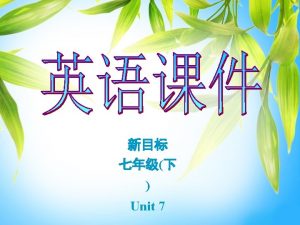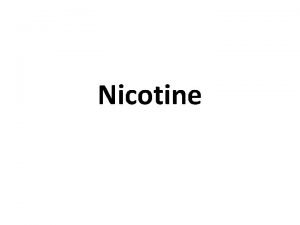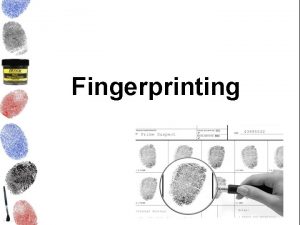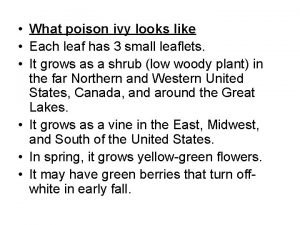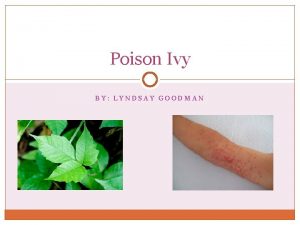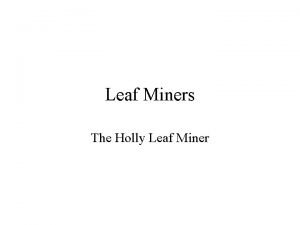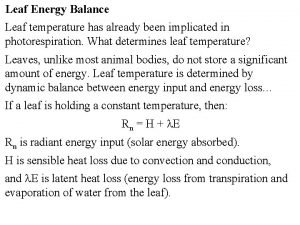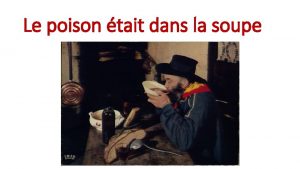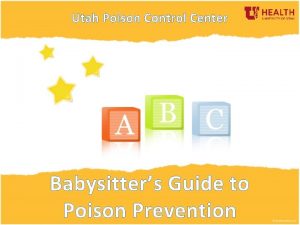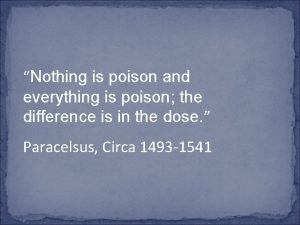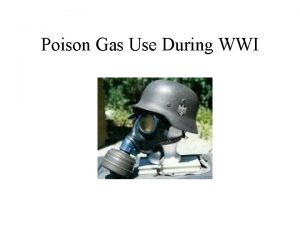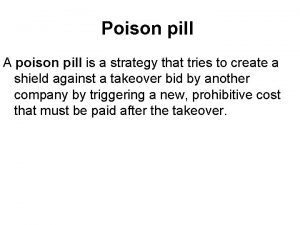What poison ivy looks like Each leaf has


















- Slides: 18

• What poison ivy looks like • Each leaf has 3 small leaflets. • It grows as a shrub (low woody plant) in the far Northern and Western United States, Canada, and around the Great Lakes. • It grows as a vine in the East, Midwest, and South of the United States. • In spring, it grows yellow-green flowers. • It may have green berries that turn offwhite in early fall.

• • What poison oak looks like: Each leaf has 3 small leaflets. It most often grows as a shrub. It can grow as a vine in the Western United States. • It may have yellow-white berries.

• What poison sumac looks like: • Each leaf has a row of paired leaflets and another leaflet at the end. • It grows as a tall shrub or small tree. • In the Northeast and Midwest, it grows in standing water in peat bogs. • In the Southeast, it grows in swampy areas. • Often, the leaves have spots that look like blotches of black paint. These spots are urushiol, which when exposed to air turn brownish black. Before urushiol hits the air, it is clear or a pale yellow. Poison sumac: This plant has 7 to 13 leaflets on each leaf. It grows in standing water as a tall shrub or small tree. • It may have yellow-white berries.


POISON SUMAC (Spring)


POISON IVY


POISON OAK


POISON IVY


POISON SUMAC (Fall)


POISON OAK



• • • Immediately rinse your skin with lukewarm, soapy water. If you can rinse your skin immediately after touching poison ivy, poison oak, or poison sumac, you may be able to rinse off some of the oil. If not washed off, the oil can spread from person to person and to other areas of your body. Wash your clothing. Thoroughly wash all of the clothes you were wearing when you came into contact with the poisonous plant. The oil can stick to clothing, and if it touches your skin, it can cause another rash. Wash everything that may have the oil on its surface. Besides clothing, the oil from poison ivy, poison oak, and poison sumac can stick to many surfaces, including gardening tools, golf clubs, leashes and even a pet’s fur. Be sure to rinse your pet’s fur, and wash tools and other objects with warm, soapy water. Do not scratch, as scratching can cause an infection. Leave blisters alone. If blisters open, do not remove the overlying skin, as the skin can protect the raw wound underneath and prevent infection. Take short, lukewarm baths. To ease the itch, take short, lukewarm baths in a colloidal oatmeal preparation, which you can buy at your local drugstore. You can also draw a bath and add one cup of baking soda to the running water. Taking short, cool showers may also help. Consider calamine lotion or hydrocortisone cream. Apply calamine lotion to skin that itches. If you have a mild case, a hydrocortisone cream or lotion may also help. Apply cool compresses to the itchy skin. You can make a cool compress by wetting a clean washcloth with cold water and wringing it out so that it does not drip. Then, apply the cool cloth to the itchy skin. Consider taking antihistamine pills. These pills can help reduce itching, however use with caution. You should not apply an antihistamine to your skin, as doing so can worsen the rash and the itch.
 Who does he look like
Who does he look like What he looks like or how he looks like
What he looks like or how he looks like Adaptation of lotus plant
Adaptation of lotus plant Poison ivy leaves
Poison ivy leaves Poison ivy adaptations
Poison ivy adaptations Maple leaf and oak leaf homologous
Maple leaf and oak leaf homologous Leaf and non leaf procedure
Leaf and non leaf procedure What's the weather looks like
What's the weather looks like What does a million dollars look like
What does a million dollars look like Serving sizes for 3-5 year olds
Serving sizes for 3-5 year olds Which organelle looks like a stack of fluffy pancakes?
Which organelle looks like a stack of fluffy pancakes? What nicotine looks like
What nicotine looks like Metamorphic rocks
Metamorphic rocks Foliated texture that looks like blackboard
Foliated texture that looks like blackboard Old english example
Old english example Country that looks like a turkey
Country that looks like a turkey Hyperbola
Hyperbola Conic sections
Conic sections The study of fingerprints is known as
The study of fingerprints is known as

